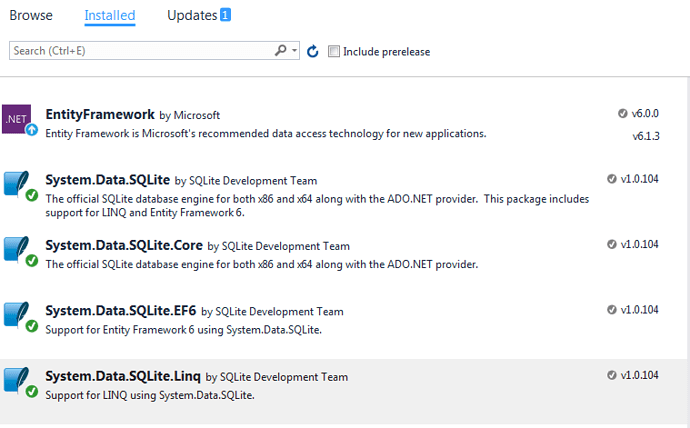Hi,
I’ve created a simple project to write data to a SQLite database and am using the SQLiteExtension with SqliteFeatureLayer to display info on a map.
The layer seems to have all the data as I would expect, but nothing displays on the map. Do I need some other extension or maybe conflicting dll? I got the System.Data.SQLite and associated packages from NuGet, so maybe there is a version conflict? I attach a screen shot of the packages directory because I’ve had to remove that from the project due to size.
To further illustrate the point, I used GetAllFeatures and populated an InMemoryFeatureLayer from the SqliteFeatureLayer. This layer displays on the map as expected.
Another question I have on this process is when I create the Shots table, the “name” field is automatically added. Why is this field reserved and can I use it in my database design safely?
Along this line, the SQLite guide seems to indicate that when using CreateTable that the associated spatial index is automatically created. This is indeed not happening as I get errors about idx_Shots_geom not existing unless I run CreateSpatialIndex.
LiteMap.zip (63.6 KB)




